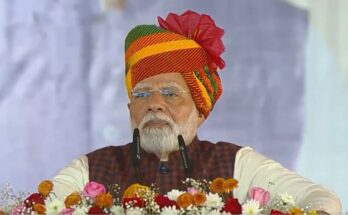New York, Nov 22 Contrasting India’s and Pakistan’s involvement in Afghanistan, India’s envoy to the US, Harsh Vardhan Shringla, has said, “Unlike (the) other country in the region, which believes in sharing ‘terrorism’, we believe in sharing ‘development partnership’.”
Speaking on Thursday at the Hudson Institute in Washington on India-Afghanistan relations, he said that despite Pakistan’s roadblocks, India has been active since 2001 in the reconstruction and development of Afghanistan because social and economic development is the key to Kabul becoming a source of regional stability.
The US Deputy Assistant Secretary for Afghanistan, Nancy Jackson, said, “We appreciate India’s important contributions to stability in Afghanistan, including $3 billion in civilian assistance since 2001.”
Shringla said India’s aid covers all the 34 provinces and includes projects in education, healthcare, infrastructure, administrative capacity, flood control, irrigation, agriculture and, even, sports.
The important ones are the Afghan-India Friendship Dam in Herat province, the parliament building in Kabul, the 220 kilovolt transmission line from Pul-e-Khumri to Kabul and the 218-km road from Zaranj to Delaram in Nimroz province in south-west Afghanistan.
The highway provides a connection to the Chabahar port that India is developing in Iran, which was used to send more than 1 million tonne of wheat and 2,000 tonnes of lentils from India to Afghanistan, he said. “This has helped meet the needs of common Afghans in drought-affected areas (that) is also being routed through Chabahar port, as Pakistan is reluctant to allow transit route even for this humanitarian aid,” he said.
The US has exempted the Chabahar port project from its Iran sanctions because of the alternate connectivity it provides for land-locked Afghanistan. The port and the airfreight corridor have boosted India-Afghanistan trade, which exceeded $1 billion last year directly benefited the Afghan small farmers and exporters, Shringla said.
“This shows the potential that exists for the trade between two countries, but also is an example of what we have lost in the past on account of the policy of blockage and denial of connectivity by Pakistan to Afghan goods,” he said. The future of India-Afghanistan relationship will be defined by the 60,000 students who have studied in India, Shringla said.
Jackson said, “One of our most exciting programs involves all three of our countries: the USAID-sponsored ‘Passage to Prosperity’ India-Afghanistan International Trade and Investment Shows.”
The event that showcases the Afghan private sector and India’s leadership in supporting Afghanistan’s economic development and regional trade has been held in the past three years, most recently in New Delhi in September. In the trade show last year deals worth nearly $350 million were made between Indian and Afghanistan business, she said.
Jackson recalled the shared history of the US, India and Afghanistan as victims of terrorism — from the ongoing attacks in Afghanistan, the Mumbai attacks in 2008 that claimed more than 300 lives and the 9/11 attacks of 2001 that killed more than 3,000 people in the US.
“We are determined to stop terrorists from threatening our countries, murdering innocent civilians, driving families from their homes, and spreading a message of hatred and fear,” she said.
Putting the US peace efforts involving the Taliban in context, Jackson said, “While remaining committed to countering the threat of terrorism from groups anywhere in the region, the US Administration understands that the American people are ready to end the war in Afghanistan.”
Trump’s South Asia Strategy outlined in 2017 acknowledged that military power alone will not bring peace to Afghanistan or stop the terrorist threat arising from that country, she said.
“Rather, our military effort is designed to create conditions for a negotiated settlement. This effort involves military resolve in Afghanistan, with decisions based on conditions on the ground,” she said.
Jackson also referred to the role of India in Trump’s South Asia strategy.
“Another critical element of the President’s South Asia strategy is for America to further develop its strategic partnership with India – the world’s largest democracy and a key security and economic partner of the United States,” she said.
“For our part, we remain committed to pursuing our shared objectives for peace and security in South Asia and the broader Indo-Pacific region,” she added.




